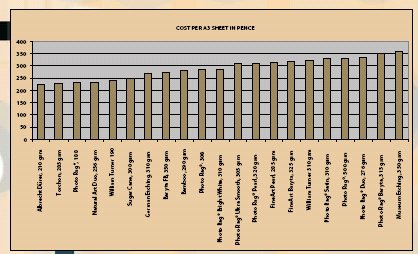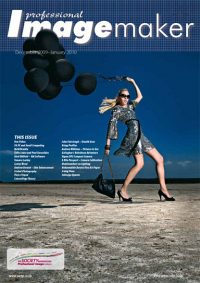articles/Paper/barytafb350-page3
Paper Chase Hahnemuhle Baryta FB 350 gsm - part 3 of 1 2 3
by Mike McNamee Published 01/12/2009

COST ANALYSIS: Fine art papers are not cheap products to buy or make; the price of the most expensive paper in the Hahnemuhle range is almost twice that of the least expensive. The prices track the quality of the materials (cotton rag is more costly than alpha cellulose), the difficulty of manufacture (Fourdrinier is cheaper than mould made), the number of coatings (two sided cost more than single sided) and the base weights. Despite all this, the value of the finished product should well exceed the outlay and the product is backed by centuries of experience and a name that is well-regarded as a benchmark standard.
Despite this the average data returned an overall error of just 3.18 ΔE 2000 after we had adjusted the profile. The distribution of errors was spread evenly across the lightness, hue and saturation channels. Although the statistics do not reach the heady heights of more 'natural', unbrightened
barytas, the prints we made were first-class and would be suitable for all uses. The main sacrifice is the accuracy of the skin tones but the effect is masked because the tones are all mapped to the cool white of the base - this is the price you pay for the brightness of the OBA-loaded media, but many clients will still prefer the brighter print. If you put the errors in the greys aside (the spectro 'sees' the blueness of the base to which the neutrals are mapped) then you slice off 0.5 ΔE2000 from the average error.
OVERALL
Overall then this is a good paper if you are seeking the image characteristics that it gives you. If it does not, Hahnemuhle have an extensive range of papers to suit every imaginable taste and, for completeness, we bring their range up to date in the table.
Please Note:
There is more than one page for this Article.
You are currently on page 3
- Paper Chase Hahnemuhle Baryta FB 350 gsm page 1
- Paper Chase Hahnemuhle Baryta FB 350 gsm page 2
- Paper Chase Hahnemuhle Baryta FB 350 gsm page 3
1st Published 01/12/2009
last update 09/12/2022 14:51:32
More Paper Articles
There are 28 days to get ready for The Society of Photographers Convention and Trade Show at The Novotel London West, Hammersmith ...
which starts on Wednesday 14th January 2026





